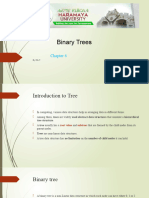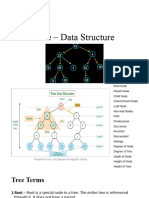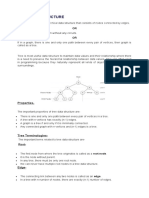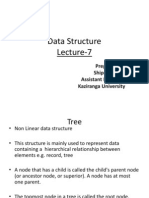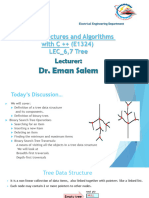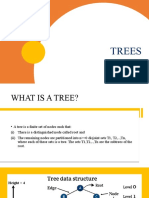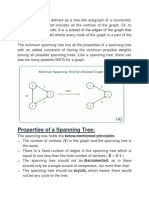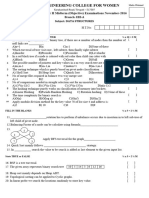0% found this document useful (0 votes)
47 views54 pagesDatatstructure 4
The document provides an overview of tree data structures, including definitions, types, advantages, and applications. It explains the characteristics of binary trees and binary search trees, along with operations such as search, insertion, and deletion. Additionally, it covers tree traversal methods and the conversion of forests to binary trees.
Uploaded by
s.dhanapal13Copyright
© © All Rights Reserved
We take content rights seriously. If you suspect this is your content, claim it here.
Available Formats
Download as PPTX, PDF, TXT or read online on Scribd
0% found this document useful (0 votes)
47 views54 pagesDatatstructure 4
The document provides an overview of tree data structures, including definitions, types, advantages, and applications. It explains the characteristics of binary trees and binary search trees, along with operations such as search, insertion, and deletion. Additionally, it covers tree traversal methods and the conversion of forests to binary trees.
Uploaded by
s.dhanapal13Copyright
© © All Rights Reserved
We take content rights seriously. If you suspect this is your content, claim it here.
Available Formats
Download as PPTX, PDF, TXT or read online on Scribd
/ 54















